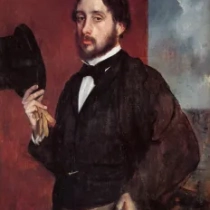 1834 - 1917
impressionism, realism
1834 - 1917
impressionism, realism
Description Edgar Degas
Edgar Degas, born in 1834, waltzed through the art world with a unique rhythm, leaving an indelible mark on Impressionism. Descended from French nobility, Degas' privileged upbringing didn't dampen his fervor for depicting the vibrant pulse of Parisian life.
Degas, though associated with the Impressionists, danced to his own artistic tune. His passion for capturing movement, particularly in ballet scenes, became a hallmark. The ballet studio was his stage, where ballerinas in various states of grace and fatigue pirouetted into timeless compositions.
Beyond dance, Degas turned his gaze to everyday life. His fascination with the racetrack, cafes, and laundresses unveiled a world of subtle narratives. Degas was not merely a painter; he was a visual storyteller, each stroke conveying a fragment of Parisian existence.
As a reluctant Impressionist, Degas preferred the term "Realist." His meticulous attention to detail and controlled use of color set him apart. The atmospheric glow of his scenes and his exploration of unconventional angles revealed a mastermind challenging artistic conventions.
Degas' affinity for printmaking and sculpture showcased his multidimensional talent. His wax sculpture "The Little Fourteen-Year-Old Dancer" was a departure from traditional idealized forms, immortalizing the raw essence of adolescence.
The artist's life was a dichotomy of privilege and isolation. His aristocratic background contrasted with a reclusive personality. Degas eschewed the limelight, opting for the shadows where he observed life with an unfiltered lens.
Financial struggles later in life didn't dampen Degas' prolific output. His late works, infused with a contemplative melancholy, delve into themes of aging and solitude. The series of bathers and women ironing convey a poignant introspection.
Degas' legacy transcends mere paint on canvas. His innovative compositions, unconventional perspectives, and devotion to portraying ordinary moments paved the way for modern art. Edgar Degas, the silent choreographer of Parisian life, remains an enigmatic figure whose artistic ballet still resonates in the galleries of the mind.
Gallery
Paintings Edgar Degas
Quotes
Art is not what you see, but what you make others see.
Painting is easy when you don't know how, but very difficult when you do.
No art was ever less spontaneous than mine. What I do is the result of reflection and the study of the great masters.
Only when he no longer knows what he is doing does the painter do good things.
Art is vice. You don't marry it legitimately, you rape it.
F.A.Q Section
"The Dance Class" (1873–1876): Depicts a ballet class and is part of his series of dance-themed paintings.
"L'Absinthe" (1876): Portrays a melancholic scene in a Parisian café with two figures lost in their thoughts.
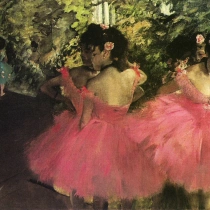
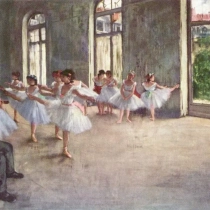
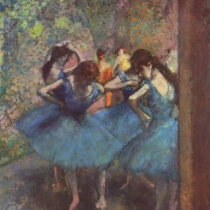

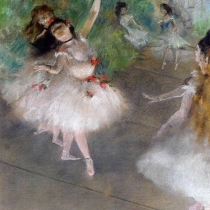



No Comments Yet...